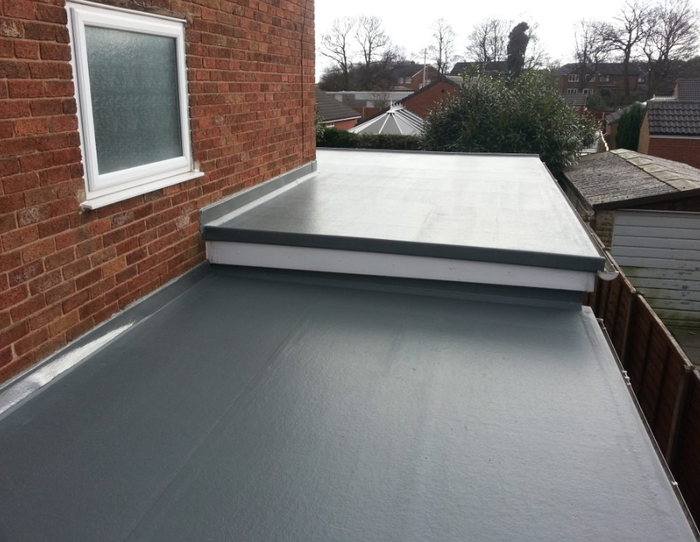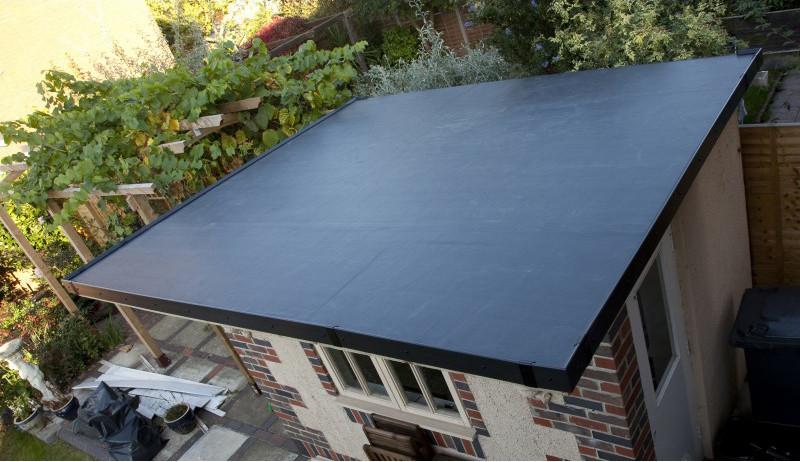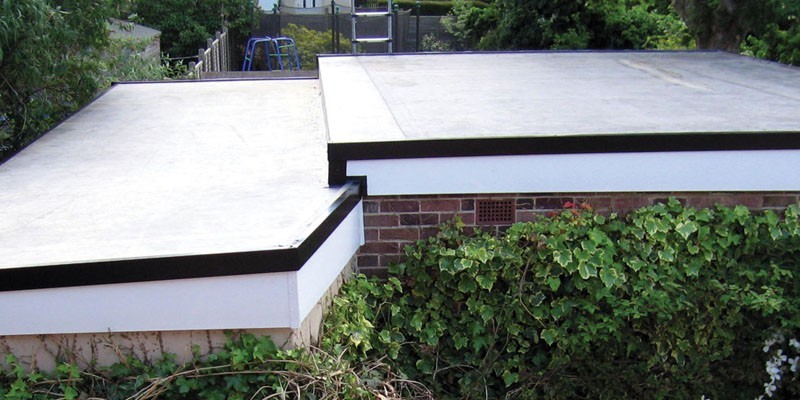ClassicBond EPDM Rubber Roofing Installations.

As part of our high quality services, we offer ClassicBond EPDM roofing to our customers. This type of rubber roofing is well known for being a reliable alternative to traditional flat roofing methods.
Our EPDM specialists can talk you through your options to find a solution which meets your needs, whether replacing an old roof or installing a new one.
This cost-effective roofing is lightweight in nature, so it’s perfect for flat roofs.
Installation is fast and efficient because the rubber membrane is applied cold, using adhesive solutions to apply the EPDM to the existing or new structure rather than heat or flames.
Relatively inexpensive, EPDM is now very common in the UK and is one of the most regularly used types of roofing materials for flat or low-sloping roofs.

The versatility of ClassicBond EPDM means it can be installed on a number of different surfaces, giving you the flexibility to choose this type of roofing whatever the shape and size of your roof.
Professional grade EPDM membrane
- BBA and BROOF(t4) fire certification
- Durable, versatile & long lasting
- Doesn’t scuff or scratch easily
- Low maintenance material
- Weather resistant & waterproof
- No blistering, rot or cracks
- Environmentally friendly
- Black or white colour options
- BBA Service life in excess of 35 years

Our ClassicBond EPDM Rubber Roofing Service.
With decades of experience providing specialised roofing services, we can install your EPDM roof or conduct any roof repairs you require.
Some customers contact us after their existing flat roof starts to experience leaks, or if they’re building a new garage or extension and want to select the right type of flat roof.
Whatever your needs, our highly qualified team can help.
Choosing to have your flat roofing professionally installed ensures the job is completed to the highest of standards, producing the best results possible.

Our fully trained teams use the most up to date installation techniques and use efficient methods to minimise disruptions.

Get a Free, No Obligation Sample or Quote
Phone: 01952 763706 or Request a call back by submitting the form below.
Click Here To Download the ClassicBond PDF Brochure
Comprehensive Product Description: EPDM Flat Rubber Roofing
Introduction
EPDM (Ethylene Propylene Diene Monomer) flat rubber roofing is a highly durable and versatile roofing solution ideal for a variety of building types, including residential, commercial, and industrial structures. Known for its exceptional weather resistance, longevity, and ease of installation, EPDM rubber roofing has become a preferred choice among roofing professionals and property owners alike.
What is EPDM Roofing?
EPDM roofing is made from a synthetic rubber compound that consists of ethylene and propylene derived from oil and natural gas. This material is manufactured in large sheets that are typically available in varying thicknesses and widths, allowing for seamless installation on flat and low-slope roofs. The rubber sheets are either black or white, with the white variant offering enhanced reflective properties for improved energy efficiency.
Key Features and Benefits
1. Durability and Longevity
One of the most significant advantages of EPDM flat rubber roofing is its outstanding durability. The material is resistant to a wide range of environmental factors, including UV radiation, ozone, and extreme temperatures. EPDM roofs can last upwards of 50 years with proper maintenance, making them a cost-effective long-term investment.
2. Weather Resistance
EPDM roofing provides excellent resistance to various weather conditions. It remains flexible and resilient in both high and low temperatures, which prevents cracking and other damage. Additionally, the material is highly resistant to hail, wind, and rain, ensuring that the roof maintains its integrity through severe weather events.
3. Ease of Installation
EPDM rubber roofing is available in large sheets that can be easily rolled out and adhered to the roof substrate. This simplicity in installation reduces labor costs and minimizes the risk of installation errors. The material can be mechanically fastened, fully adhered, or ballasted, offering flexibility to suit different roofing situations.
4. Eco-Friendly
EPDM is an environmentally friendly roofing option. The manufacturing process has a relatively low environmental impact, and the material itself is fully recyclable. Additionally, the white EPDM variant can reflect sunlight, reducing cooling costs and contributing to energy efficiency in buildings.
5. Cost-Effective
Compared to other roofing materials like PVC or TPO, EPDM offers a more affordable initial cost while still providing comparable performance and longevity. This makes it an attractive option for budget-conscious property owners without sacrificing quality.
6. Low Maintenance
EPDM roofing requires minimal maintenance, thanks to its robust nature. Regular inspections and occasional cleaning are typically sufficient to keep the roof in good condition. In the event of damage, repairs are straightforward and can often be performed without replacing large sections of the roof.
Applications of EPDM Roofing
EPDM flat rubber roofing is suitable for a wide range of applications due to its versatility and durability. Common uses include:
1. Residential Roofing
For homeowners with flat or low-slope roofs, EPDM provides a reliable and long-lasting solution. Its weather-resistant properties ensure that homes remain protected from the elements year-round.
2. Commercial Buildings
Commercial properties, including warehouses, retail stores, and office buildings, benefit from EPDM’s durability and cost-effectiveness. The material’s reflective properties can also help reduce energy costs in large commercial spaces.
3. Industrial Facilities
Industrial buildings often require roofing materials that can withstand harsh environmental conditions. EPDM’s resistance to chemicals, extreme temperatures, and physical damage makes it ideal for these settings.
4. Green Roofing Systems
EPDM is an excellent choice for green roofs due to its compatibility with various substrates and its ability to retain moisture. It provides a stable and waterproof base for soil and plant layers, promoting sustainable building practices.
Installation Process
1. Preparation
Proper preparation is crucial for a successful EPDM roofing installation. The roof surface must be clean, dry, and free of debris. Any existing roofing materials should be removed, and the substrate should be inspected for damage.
2. Measuring and Cutting
The EPDM sheets are measured and cut to fit the dimensions of the roof. Careful planning is required to ensure minimal seams and overlaps, which helps maintain the integrity of the waterproof barrier.
3. Applying Adhesive
Depending on the chosen installation method, adhesive is applied to either the roof substrate or the EPDM sheet. The adhesive ensures a strong bond between the rubber and the substrate, preventing any movement or lifting.
4. Laying the EPDM Sheets
The EPDM sheets are carefully rolled out onto the adhesive-coated surface. It’s important to smooth out any wrinkles or air bubbles to ensure a flat, even application. Seams between sheets are sealed with special adhesive tape to create a watertight seal.
5. Finishing Touches
Once the EPDM sheets are in place, flashing and edge details are installed to secure the roof’s perimeter and any protrusions, such as vents or chimneys. These finishing touches help prevent water infiltration and enhance the roof’s overall appearance.
Maintenance and Care
EPDM roofing requires minimal maintenance, but regular inspections are recommended to ensure its longevity. Key maintenance tasks include:
1. Cleaning
Periodic cleaning with a mild detergent and water can help remove dirt and debris that may accumulate on the roof’s surface. This is especially important for white EPDM roofs, which can lose their reflective properties if covered in grime.
2. Inspections
Regular inspections, ideally twice a year, can help identify any potential issues before they become major problems. Look for signs of damage, such as tears, punctures, or loose seams, and address them promptly.
3. Repairs
In the event of damage, EPDM roofs can be easily repaired using patch kits. The damaged area is cleaned and prepped, and a patch of EPDM material is adhered over the affected area to restore the roof’s integrity.
Conclusion
EPDM flat rubber roofing is a versatile, durable, and cost-effective solution for a wide range of roofing applications. Its exceptional weather resistance, ease of installation, and low maintenance requirements make it a popular choice for residential, commercial, and industrial buildings. By choosing EPDM roofing, property owners can enjoy a reliable and long-lasting roofing system that offers excellent value and performance for decades to come.
